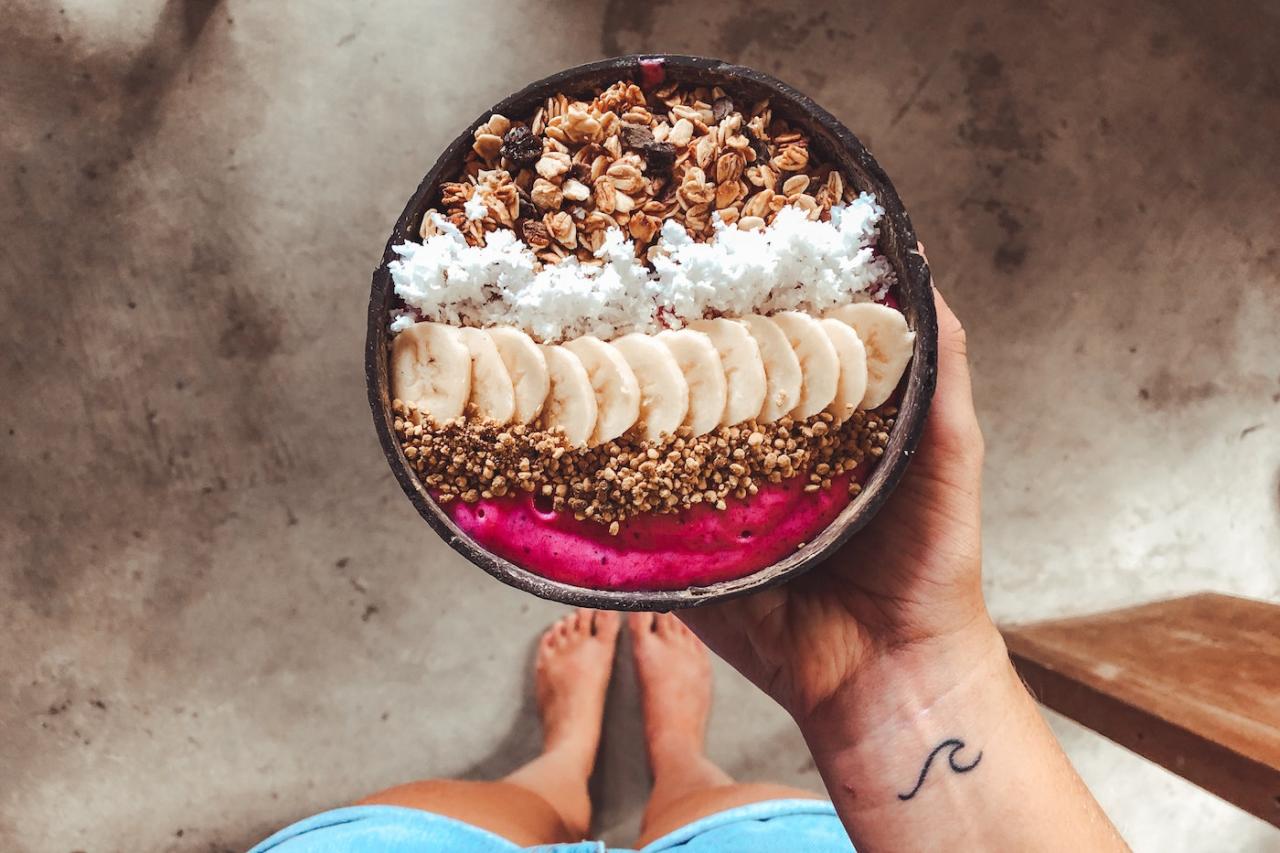
5 Ways to Resume Your Healthy Eating Schedule
5 Ways to Resume Your Healthy Eating Schedule – We’ve all been there: the holidays are over, the new year is here, and we’re ready to get back on track with our healthy eating habits. But sometimes, it can be hard to know where to start.
This post will help you create a plan that works for you, so you can start eating healthier without feeling overwhelmed.
We’ll explore five practical tips for making healthy eating a sustainable part of your life, from setting realistic goals to making mindful choices when eating out. Get ready to reclaim your health and rediscover the joy of nourishing your body with delicious and nutritious foods!
Start Small and Set Realistic Goals

Embarking on a healthy eating journey can feel overwhelming, especially if you’re aiming for a complete overhaul of your diet. The key to success lies in setting achievable goals and making gradual changes that you can sustain over time. This approach not only makes the transition smoother but also helps you build healthy habits that last.
Examples of Small, Realistic Changes
Small, realistic changes can be easily incorporated into your daily routine without feeling restrictive or overwhelming. These changes can significantly impact your overall health and well-being. Here are some examples:
- Swap sugary drinks for water or unsweetened tea:This simple switch can drastically reduce your daily sugar intake without sacrificing flavor.
- Add more fruits and vegetables to your meals:Aim for at least one serving of fruits and vegetables at each meal. You can easily incorporate them into salads, smoothies, or as snacks.
- Choose whole grains over refined grains:Whole grains provide more fiber and nutrients, promoting satiety and better digestion. Look for bread, pasta, and cereals labeled “whole grain” or “100% whole wheat.”
- Cook more meals at home:This gives you control over the ingredients and portion sizes. You can experiment with healthier recipes and enjoy the satisfaction of preparing your own food.
- Reduce processed foods:Processed foods are often high in unhealthy fats, sugar, and sodium. Opt for whole, unprocessed foods whenever possible.
Benefits of Gradual Progress
Focusing on gradual progress rather than drastic overhauls has several advantages:
- Increased sustainability:Making small, manageable changes is more likely to lead to long-term success. Drastic changes can be difficult to maintain and often lead to feelings of deprivation, which can sabotage your efforts.
- Reduced risk of burnout:Gradual changes allow your body and mind to adapt to new habits without feeling overwhelmed. This reduces the likelihood of giving up or feeling discouraged.
- Improved self-efficacy:Achieving small goals builds confidence and motivates you to continue making progress. This positive reinforcement fosters a sense of accomplishment and empowers you to reach your ultimate health goals.
Plan Your Meals and Snacks
When you’re trying to resume your healthy eating schedule, planning your meals and snacks is crucial. This proactive approach helps you make mindful choices and avoid impulsive unhealthy decisions. By taking the time to plan, you’re setting yourself up for success in your healthy eating journey.
Getting back on track with healthy eating can be a challenge, especially if you’ve fallen into a rut. One of the best strategies is to make meal prep a habit, but even that can get stale after a while.
If you’re feeling stuck in a meal prep rut, check out 6 proven ways to get out of a meal prep plateau to refresh your routine. With a little creativity and some new inspiration, you’ll be back to enjoying your healthy eating schedule in no time.
Meal Planning and Prepping
Meal planning and prepping are powerful tools for healthy eating. They help you avoid the temptation of unhealthy options when you’re hungry and in a hurry.
Getting back on track with healthy eating can feel overwhelming, but it doesn’t have to be a drastic overhaul. Start with small, achievable changes like planning meals ahead, incorporating more fruits and vegetables, and staying hydrated. You might wonder if meal timing matters for weight loss, and while it can play a role, it’s not the only factor.
Check out this article on does meal timing matter for losing weight to learn more. Ultimately, focus on sustainable habits that fit your lifestyle, and remember that consistency is key to long-term success.
- Create a Weekly Meal Plan:Decide what you’ll eat for each meal and snack throughout the week. This can be as simple as a list or a more detailed meal plan with recipes.
- Prepare Meals in Advance:Set aside some time on the weekend or in the evenings to cook and prepare meals for the week. This could include chopping vegetables, cooking grains, or preparing salads.
- Batch Cook:Prepare large batches of healthy meals like soups, stews, or casseroles that you can portion out and freeze for later.
- Pack Snacks:Keep healthy snacks like fruit, vegetables, nuts, and yogurt readily available to avoid reaching for unhealthy snacks when you’re on the go.
Healthy Meal and Snack Options
Here are some examples of healthy meal and snack options for different times of the day:
Breakfast
- Oatmeal with berries and nuts
- Yogurt with fruit and granola
- Whole-wheat toast with avocado and eggs
- Smoothie with fruits, vegetables, and protein powder
Lunch
- Salad with grilled chicken or fish
- Soup and a whole-wheat sandwich
- Leftovers from dinner
- Tuna or chicken salad on whole-wheat bread
Dinner
- Grilled salmon with roasted vegetables
- Chicken stir-fry with brown rice
- Lentil soup with whole-wheat bread
- Vegetarian chili with cornbread
Snacks
- Fruit (apple, banana, berries)
- Vegetables (carrots, celery, cucumbers)
- Nuts and seeds (almonds, walnuts, pumpkin seeds)
- Yogurt
- Hard-boiled eggs
Benefits of a Well-Stocked Pantry and Refrigerator
Having a well-stocked pantry and refrigerator with nutritious foods can make healthy eating much easier. Here’s why:
- Reduced Impulsive Choices:When you have healthy options readily available, you’re less likely to make unhealthy choices when you’re hungry.
- Time Savings:Having prepped ingredients and meals on hand can save you time and energy, especially on busy days.
- Cost-Effective:Planning your meals and shopping for groceries in advance can help you avoid impulse purchases and save money.
- Increased Nutrient Intake:A well-stocked pantry and refrigerator make it easier to incorporate a variety of fruits, vegetables, and whole grains into your diet.
Hydrate Consistently
Water is essential for our bodies to function properly, and staying hydrated is crucial for maintaining a healthy eating schedule. When you’re well-hydrated, you’re more likely to make healthier food choices and avoid overeating.
Getting back on track with healthy eating can feel overwhelming, but it doesn’t have to be a complete overhaul. Start with small, achievable changes, like swapping sugary drinks for water, adding more veggies to your meals, and planning your grocery list ahead of time.
Remember, it’s not about perfection, but progress! You might be surprised to learn that registered dietitians don’t always eat perfectly either, as you can see in this article about 3 surprising takeaways about being a registered dietitian.
The key is finding what works for you and making sustainable changes you can stick with. And remember, a little consistency goes a long way!
Benefits of Hydration
Drinking enough water throughout the day offers numerous benefits for your overall health and well-being. Here are a few key advantages:
- Boosts Metabolism:Water helps your body break down food and convert it into energy, contributing to a healthy metabolism.
- Regulates Body Temperature:Water plays a vital role in regulating your body temperature, keeping you cool and comfortable.
- Improves Digestion:Water aids in digestion by helping to move food through your digestive system, preventing constipation and promoting regularity.
- Flushes Out Toxins:Water helps your body flush out toxins and waste products, promoting overall health and vitality.
- Enhances Energy Levels:Dehydration can lead to fatigue and low energy levels. Staying hydrated can help you feel more energized and focused throughout the day.
- Supports Healthy Skin:Water helps keep your skin hydrated and supple, reducing the appearance of wrinkles and dryness.
Healthy Beverage Choices
Incorporating a variety of healthy beverages into your daily routine can help you stay hydrated and meet your fluid needs. Here are some suggestions:
- Water:The best and most readily available source of hydration. Opt for plain water or add a squeeze of lemon or lime for flavor.
- Unsweetened Tea:Green tea, black tea, and herbal teas are all excellent choices for hydration. They are naturally low in calories and contain antioxidants that may offer health benefits.
- Infused Water:Add fruits, vegetables, or herbs to your water for a refreshing and flavorful twist. Some popular combinations include cucumber and mint, berries and lemon, or ginger and lime.
- Coconut Water:A naturally hydrating beverage that is rich in electrolytes. It can be a good choice for replenishing fluids after exercise or during hot weather.
Drinking Water Before Meals
Drinking water before meals can help you feel fuller and reduce your overall calorie intake.
“Drinking water before meals can help you feel fuller and reduce your overall calorie intake.”
Studies have shown that drinking water before meals can lead to a decrease in food consumption, which can be beneficial for weight management.
Listen to Your Body’s Hunger Cues: 5 Ways To Resume Your Healthy Eating Schedule
One of the most crucial aspects of sustainable healthy eating is learning to differentiate between true hunger and other urges. This involves understanding your body’s signals and responding accordingly.
Understanding Hunger vs. Cravings
Hunger and cravings often feel similar, but they stem from different physiological processes. True hunger is a physical need for nourishment, triggered by an empty stomach and low blood sugar levels. It typically comes on gradually and feels like a gentle rumbling sensation.
On the other hand, cravings are often driven by emotional factors, such as stress, boredom, or social cues. They tend to be intense and sudden, focusing on specific foods, often those high in sugar, fat, or salt.
Make Healthy Choices When Eating Out

Eating out can be a fun and social experience, but it can also be a challenge to stick to your healthy eating goals. Restaurants often serve large portions, and their menus may be filled with tempting but unhealthy options. However, with a little planning and awareness, you can still enjoy dining out without derailing your healthy eating efforts.
Tips for Navigating Restaurant Menus, 5 ways to resume your healthy eating schedule
It’s essential to approach restaurant menus with a strategic mindset to make healthier choices. Here are some tips:
- Read the menu carefully: Before ordering, take your time to read the entire menu, paying attention to portion sizes, ingredients, and preparation methods. Look for dishes that are grilled, baked, or steamed, rather than fried or deep-fried.
- Ask questions: Don’t hesitate to ask your server about the ingredients in a dish or how it’s prepared. You can also request modifications, such as asking for your food to be prepared without added salt, butter, or oil.
- Choose lean proteins: Opt for lean protein sources such as grilled chicken, fish, tofu, or beans. Avoid dishes that are breaded or fried, as they tend to be higher in calories and fat.
- Load up on vegetables: Fill your plate with plenty of vegetables, which are naturally low in calories and high in nutrients. Choose salads with grilled chicken or fish, or order a side of steamed vegetables.
- Be mindful of portion sizes: Restaurants often serve large portions, so consider sharing a dish with a friend or asking for a smaller portion size. You can also take half of your meal home for later.
Healthy Choices at Different Types of Restaurants
Making healthy choices when eating out is possible, regardless of the type of restaurant you’re visiting. Here are some examples:
- Italian: Order a grilled chicken or fish dish with a side of steamed vegetables. Avoid pasta dishes that are loaded with cream or cheese.
- Mexican: Choose dishes like grilled fajitas, tacos with lean meat and plenty of vegetables, or a veggie burrito bowl. Avoid dishes that are fried or loaded with cheese and sour cream.
- Chinese: Order dishes that are steamed or stir-fried, and choose lean protein sources like chicken or tofu. Avoid dishes that are deep-fried or heavily sauced.
- American: Look for grilled chicken or fish dishes with a side of vegetables. Avoid burgers, fries, and other fried foods.
Portion Control and Avoiding Unnecessary Extras
Portion control is crucial when dining out, as restaurants often serve larger portions than you might typically eat at home. To avoid overeating, consider the following:
- Share a dish: If you’re dining with a friend or family member, consider sharing a dish or ordering appetizers instead of full meals.
- Ask for a to-go box: When you’re served your meal, immediately ask for a to-go box. This will help you avoid overeating and allow you to save half of your meal for later.
- Skip the extras: Avoid ordering appetizers, sides, or desserts, as these can add significant calories to your meal. If you must have a dessert, choose a smaller portion or share it with someone else.
Concluding Remarks

Recommitting to healthy eating is a journey, not a destination. By implementing these five strategies, you can make lasting changes to your diet that will support your overall well-being. Remember to be kind to yourself, celebrate your progress, and enjoy the delicious journey of nourishing your body with healthy, fulfilling foods!






